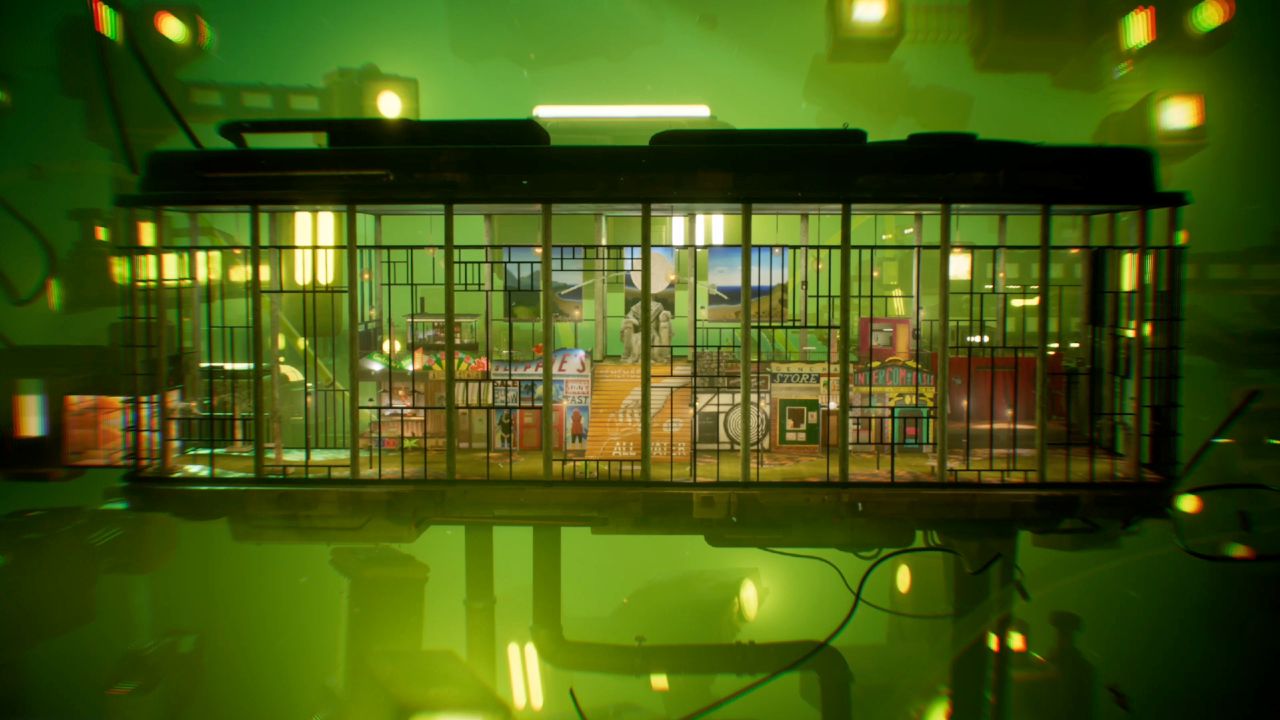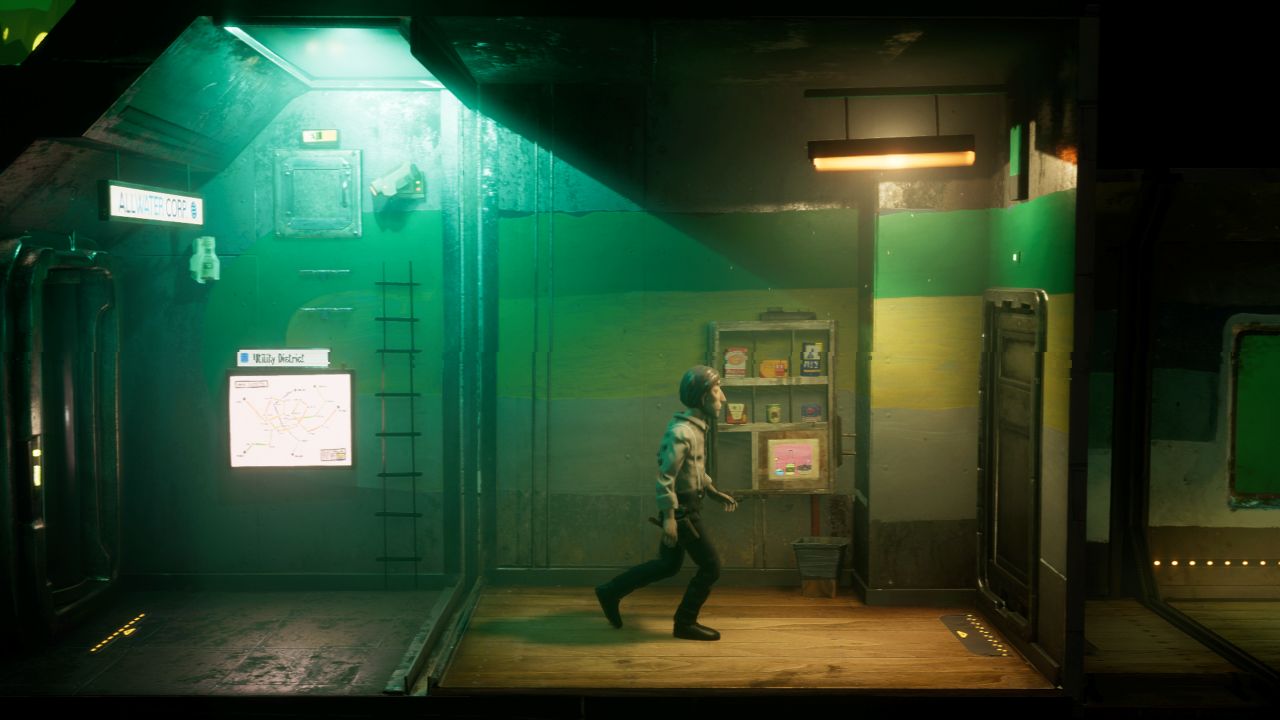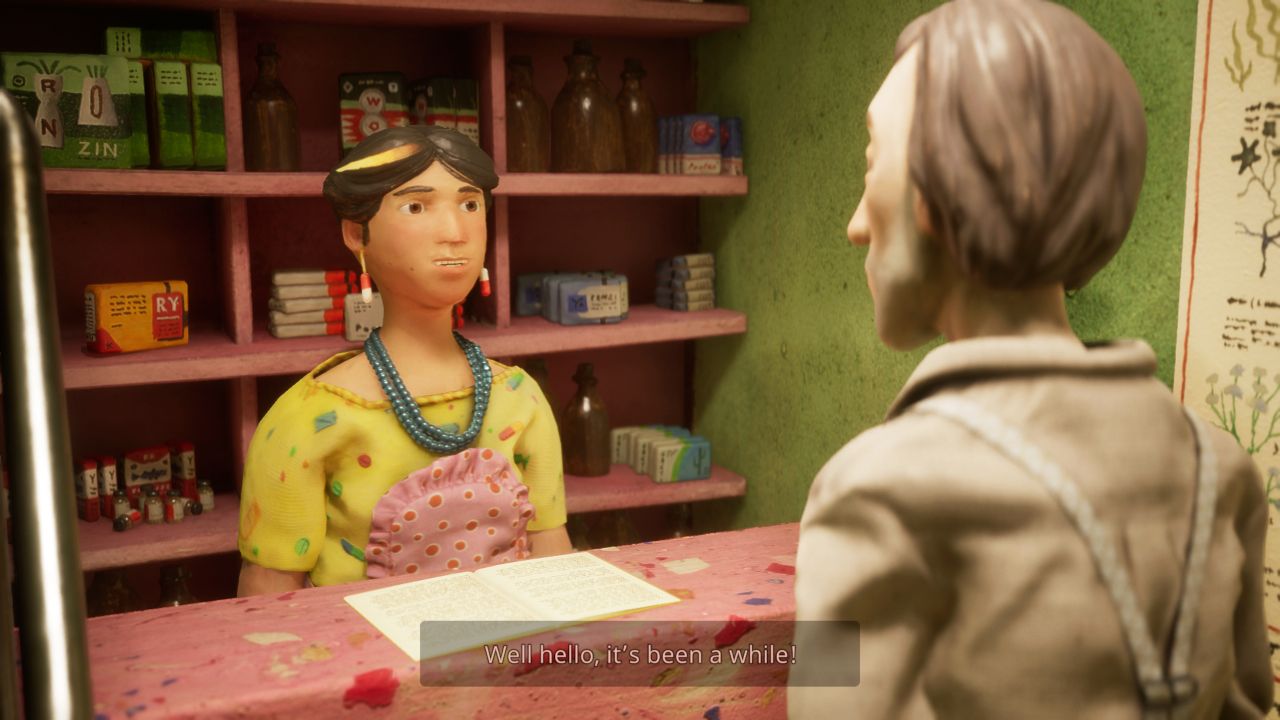Harold Halibut Review
Some games overstay their welcome, like a skydiver deploying their parachute just before hitting the ground. These bloated experiences are usually either repetitive slogs or bereft of significant content, symptomatic of an industry where length is sometimes equated with value. Harold Halibut is a visually striking third-person adventure game that suffers heavily from its lack of brevity. Despite its quirky characters and wonderful stop-motion charm, the monotonous and shallow walking-simulator gameplay makes even half its runtime seem excessive.

Harold is a handyman living in an underwater base on an alien world. Many years ago, the generational spaceship Fedora left Earth to find a new home. Unfortunately, their destination planet was entirely covered by water. After they crashed into the sea, the ship’s crew managed to reconfigure the Fedora into the modular sea base that Harold now calls home. Harold and other occupants get around using an interconnected tube system—think water slide. These tubes, and the rest of the base, are run by the All Water Corporation who charges for transit and maintains order. Most occupants of the base have full and regular lives, and a few continue to research ways for the ship to leave its watery prison and head back to the stars.
Harold, meanwhile, is living a mundane existence and seems depressed. He is a timid and unintelligent character who is not quite sure of his place. He does what he is told by others, who sometimes treat him like dirt. His primary boss is Professor Mareaux, who at least displays some motherly tendencies towards the 20-something handyman in between bouts of verbal degradation. The Professor is one of several who are trying to get the Fedora back into space, while Harold completes basic tasks that the others are too busy for. One day, when he is cleaning the clogged water filters, he sees a strange bipedal fish creature floating in the overflow tank. It appears to be injured, and Harold and the Professor slowly nurse it back to health. When the fish regains consciousness, they discover it is intelligent and has friends. Harold forms a close bond with the alien that may either help the Fedora soar or cause it to sink.

The greatest strength of the story is the large cast of eccentric characters. Most are distinct and memorable, like the old post officer who goes for jogs, the school teacher who pumps iron and watches TV dramas, the captain that keeps switching jobs, and the All Water CEO who seems to be up to something nefarious. Plus there is Harold’s fishy friend, who has trouble understanding humanity, becoming a fish-out-of-water character quite literally. Each is bizarre in a good way, even though many treat Harold like he is a moron, perhaps justifiably, because he makes errors and forgets information. Sometimes the tone is confusing though, regularly persisting with juvenile character arcs and then, later, dabbling in philosophy like it is emulating 2001: A Space Odyssey. Despite this tonal inconsistency, the cast is well balanced and remembering where they are and what they do is no challenge at all.
Sadly the plot takes a while to get going and constantly meanders. It takes too long for Harold to meet his fishy friend and help it heal. Harold’s day-to-day activities are generally boring and not important. There is a deadline for the Fedora to leave the planet, due to approaching solar flares, but it is months away, so the main objective lacks urgency. Since Harold does not have any tangible goals or passions he mostly drags the story down. And while he does grow a backbone at the end, the finale is silly, impractical, and unsatisfactory. The slow narrative is mostly a liability, like the lethargic gameplay that accompanies it.
The gameplay consists almost entirely of walking back and forth, usually to the left or right on screen. During this walking (or slow jogging), there is rarely any story being delivered, so locomotion gets boring after just a few hours. Once at a destination, the story comes out via the protracted dialogue exchanges. Fast readers will rejoice at the opportunity to skip through conversations, since they can be overstuffed and slowly delivered, although some cutscenes rescind the option. After a character is finished rambling, Harold might need to sleep to prepare for a new day of walking and talking. Only rarely does the game produce something that could be considered gameplay, with a few computer terminals to operate, some basic mechanical interactions, and sequences where Harold pilots a vehicle of some kind (e.g. a submersible). Excluding the walking and talking, there is less than 15 minutes of actual gameplay across the 10-12 hour adventure, which is horrible for pacing and player engagement.

This dawdling pace and lack of gameplay is such a pity considering the stunning art style. The visuals are reminiscent of famous stop-motion animation movies, like Wallace and Gromit, with seemingly just as much care taken to piece it together. Locations appear handcrafted with intricate detail, intimate lighting, and minimal visual repetition. Character models are not high polygon but they have appealing designs, with the exception of Harold’s fishy friend that just looks like a stick figure with a fish-head and cape. Motion capture brings many scenes to life and most dialogue exchanges have enough character movement, although the lip-syncing is basic. Music is good, with a few piano dominated tracks that are interlaced nicely with strings. The game also tries to be artistic, and a few times it wonderfully succeeds, transcending the medium, like when Harold first spots his fishy friend in the tank. And during these moments, some might wonder if Harold Halibut would have been better off as a movie instead.
Sadly, the game is not in the best technical state. At random times during dialogue, framerate would go into single digits and stay there for 10-20 seconds. Some of the user interface is also buggy, with one late-game interaction breaking so bad it required a restart from an earlier save. The cutscene dialogue also went at super-speed a few times, causing multiple characters to speak over each other at a rate that was incomprehensible. But the worst issue is that the game hard crashed several times, each one requiring a full PC restart.

Some players will love Harold Halibut because of its excellent stop-motion visual style and quirky characters. A few might even be okay with the slowly paced story and timid main character. But it is unlikely that any will consider the gameplay to be adequate or enjoy how much walking back and forth there is. For large chunks of the 10-12 hour journey, it is just extremely boring and tedious. So much work has gone into the art and characters, but it seems wasted when surrounded with such a shallow framework. There is no doubt that Harold Halibut’s is a beautiful underwater craft, but it goes below crush depth and stays there long enough for the inevitable to happen.
